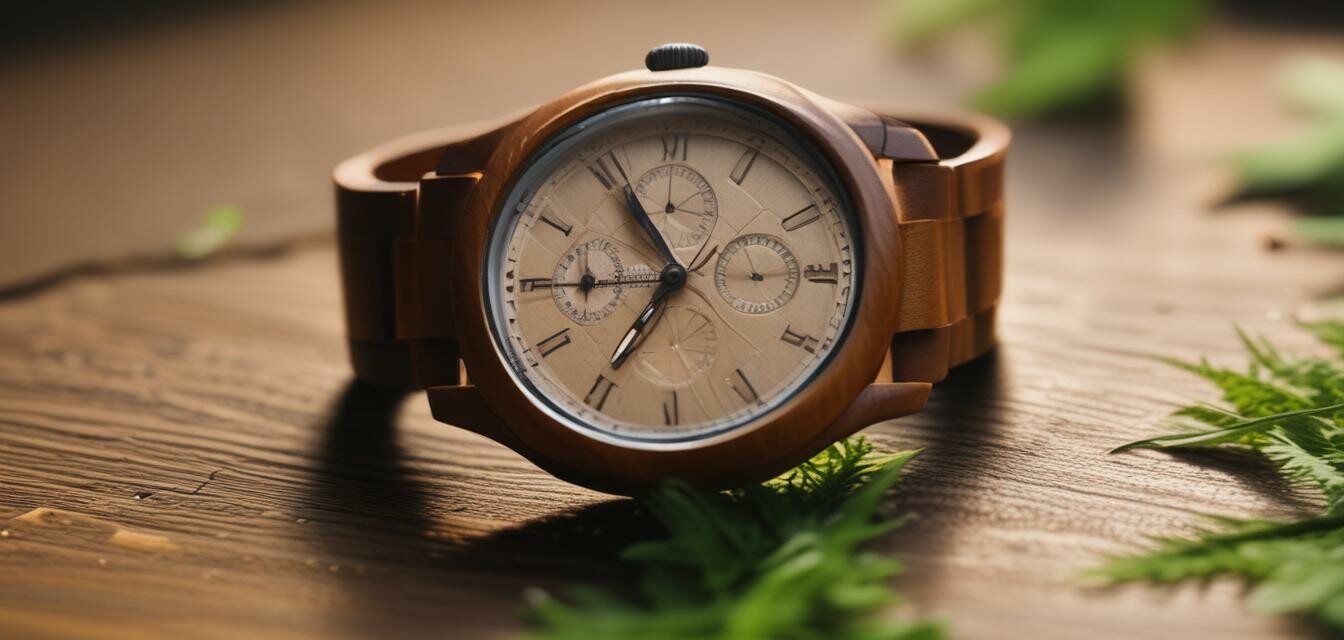
Environmental Impact of Luxury Watch Production
- The luxury watch industry is increasingly focusing on sustainability practices.
- Brands are incorporating eco-friendly materials in their products.
- Ethical production techniques are being prioritized to minimize environmental impact.
- Consumer awareness around sustainability is driving change in luxury watch production.
In 2025, the luxury watch industry is at a crossroads, facing mounting pressures to adopt sustainable practices while maintaining its opulent appeal. Nearly every luxury watch brand is reinventing its approach to production and materials, not only to fulfill consumer demand but also to minimize its environmental footprint. This article discusses the sustainability practices of leading luxury watch brands and how they’re addressing environmental concerns through eco-friendly materials and ethical production techniques.
The importance of sustainability in luxury watch production
The luxury watch market has long been synonymous with precision, quality, and craftsmanship. However, in today’s marketplace, sustainability is becoming just as important. More consumers are conscious of the environmental impact of their purchases, and brands that embrace eco-friendly practices are likely to thrive. Here we will explore the driving forces of sustainability in the luxury watch industry.
Market trends influencing sustainability
Several trends are reshaping the way luxury watch brands operate, including:
- Increased demand for sustainable products.
- Growing emphasis on corporate social responsibility.
- Investment in sustainable technology and practices.
- Consumer education about the environmental cost of luxury products.
Eco-friendly materials used in luxury watches
Luxury watch brands are exploring various eco-friendly materials to reduce their environmental impact. The following table presents some common eco-friendly materials and their benefits:
| Material | Benefits |
|---|---|
| Recycled metals | Reduces mining waste and energy consumption. |
| Eco-friendly leather alternatives | Minimizes animal cruelty and environmental impact through synthetic or plant-based options. |
| Biodegradable straps | Lessens plastic pollution through natural decomposition. |
| Wood from sustainable sources | Supports regenerative forestry practices and reduces deforestation. |
Innovations in materials
Luxury watch brands are also innovating with new materials that offer both beauty and sustainability. Brands are increasingly incorporating:
- Biodegradable composites
- Natural rubber
- Upcycled ocean plastic
Ethical production techniques in luxury watchmaking
Along with using eco-friendly materials, ethical production techniques are becoming paramount in the luxury watch industry. Here's what brands are focusing on:
- Ensuring fair labor practices across their supply chains.
- Reducing carbon emissions by optimizing processes.
- Promoting transparency in sourcing materials.
- Implementing recycling programs for old watches.
Case studies of luxury watch brands
Several luxury watch brands are leading the way in sustainable production. Each brand has its unique approach to sustainability:
| Brand | Initiatives |
|---|---|
| Rolex | Incorporates recycled metals and promotes responsible sourcing. |
| TAG Heuer | Focuses on carbon-neutral manufacturing processes. |
| Cartier | Uses responsibly sourced gold and alerts customers to ethical practices. |
| Breitling | Emphasizes ocean conservation and uses recycled materials in production. |
Consumer influence on luxury watch sustainability
As consumers become more aware of their purchasing power, they hold brands accountable for their sustainability practices. This shift is making it crucial for luxury watch companies to:
- Engage in community initiatives.
- Provide education on sustainability to their customers.
- Respond to consumer feedback to guide their sustainability strategies.
- Invest in marketing that emphasizes their commitment to the environment.
Looking ahead: The future of sustainable luxury watches
As we move forward, the expectations for sustainability will continue to rise. Luxury watch brands that innovate and invest in sustainable practices are likely to be the ones leading the market. Here are some predictions for the future:
- Greater collaboration among luxury brands to share sustainable practices.
- Increased development of new eco-friendly technologies.
- Broader acceptance of circular economy principles in luxury watch production.
- Enhanced transparency in the supply chain data.
Conclusion
In conclusion, the environmental impact of luxury watch production is prompting many brands to rethink their practices. From eco-friendly materials to ethical production techniques, the future of the luxury watch industry hinges on the ability to operate sustainably. Consumers and brands alike are committed to ensuring that craftsmanship can go hand-in-hand with environmental responsibility. As trends continue to evolve, staying informed about these changes is essential for collectors and enthusiasts alike. Explore more about the various luxury watch brands and their sustainability efforts in our News and Trends section.

